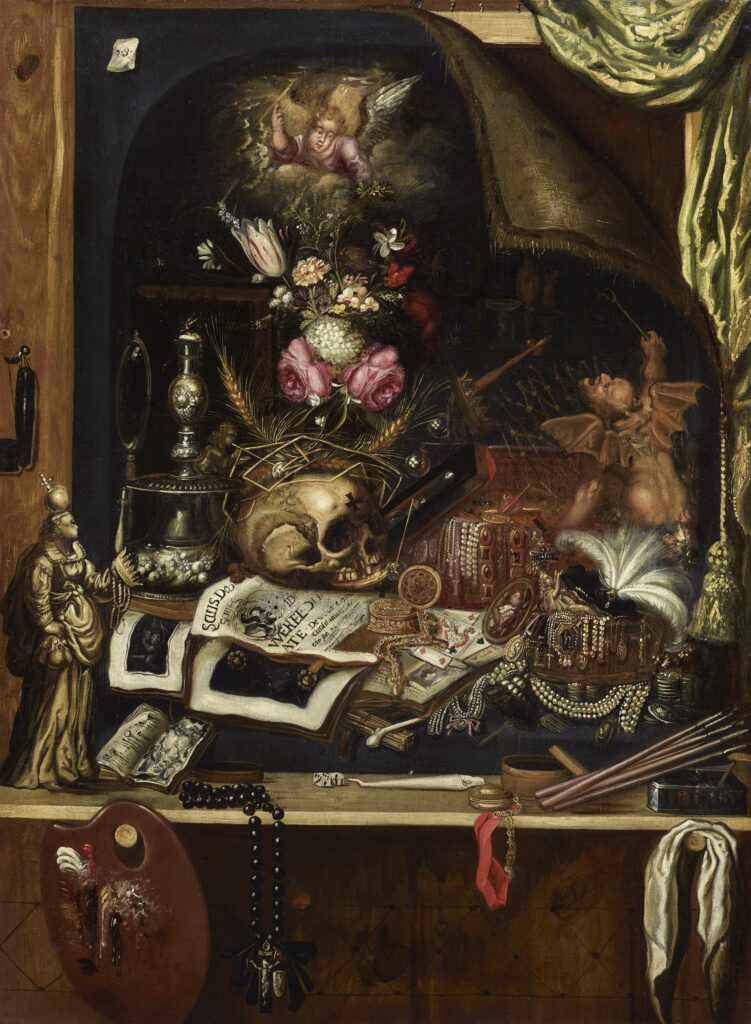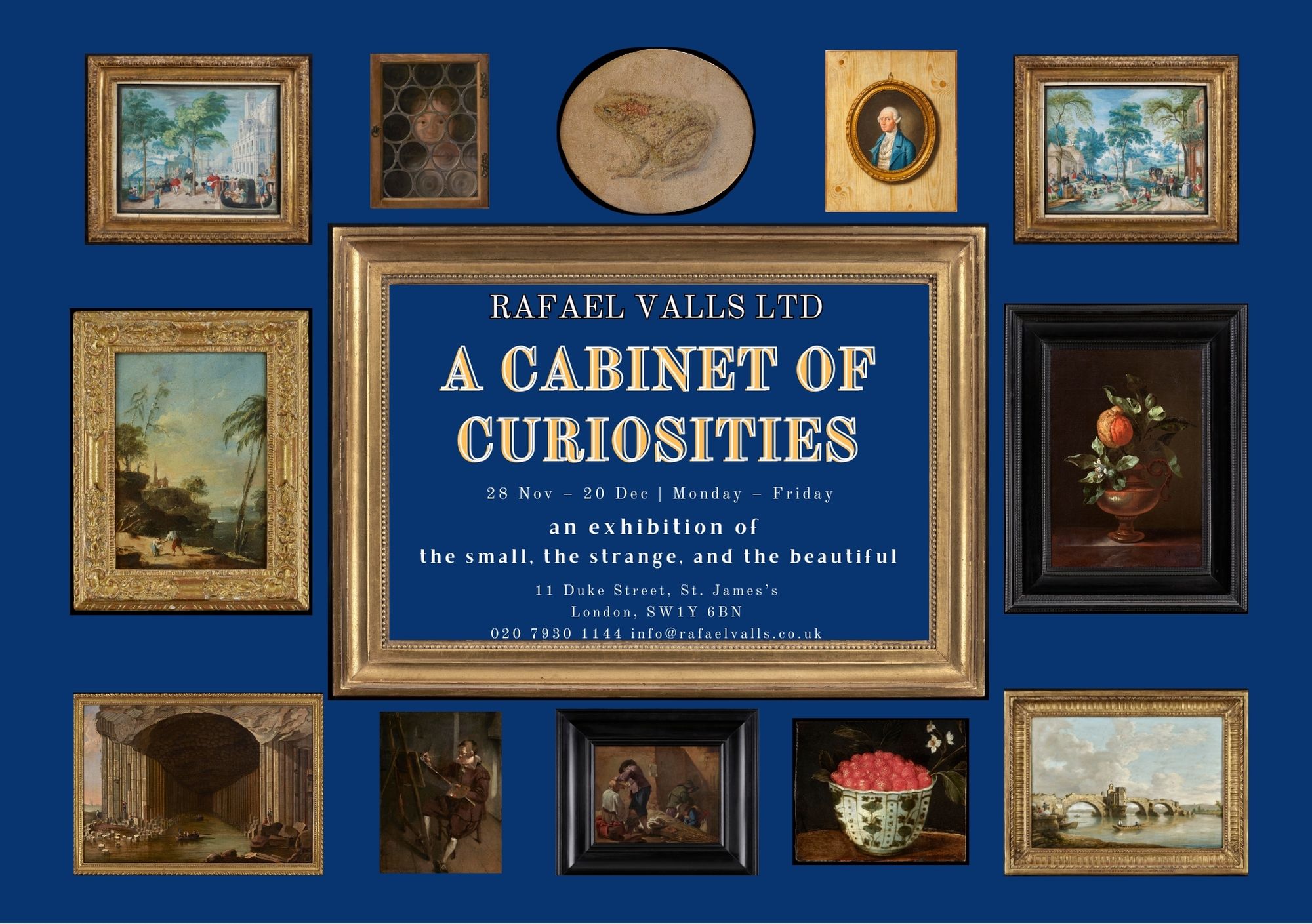Circle of Cornelis Gysbrechts
Circa 1610 - after 1675
A Vanitas Still Life with countless religious and Memento Mori Elements including an Angel, a Devil, a Rosary, a Skull, a Clock, Jewellery, Flowers and Playing Cards together with a Painter’s Palette and Paint Brushes

Medium:
Oil on Canvas
Category:
Dimensions:
136(h) x 100(w) cms
Signed:
inscribed on the almanac: WERELD / ATE . De woorme come / Ghysb...
Exhibitions:
Essay:
Cornelis Norbertus Gysbrechts (or Gijsbrechts) was born in Antwerp and later worked in Regensburg and in Hamburg in the 1660s. He was the Court painter in Copenhagen from 1668 to 1672. He was originally a painter of Vanitas still lifes in the style of the School of Leiden. However, he was known more for his trompe l'oeil technique, which he perfected in Denmark. At the Danish court under the influence of his royal patron his style and subjects became more refined.
The success with which painters imitated wood led to the integration of trompe l'oeil directly into furniture, for example it often served as decoration on a cupboard door. Gysbrechts carried this deception further by painting the door with a simulated pane of glass with a letter rack strung across it.
-
This superbly rich and large 17th century still life is teeming with vanitas elements contained within an overall trompe l'oeil. While the memento mori theme is evident the tone of the work is playful rather than grim with a multiplicity of peculiar motifs and movement within a typically static genre. The eclectic medley of objects seems haphazardly arranged within a painting on a studio wall with the canvas visibly slipping off the stretcher. On a shelf beneath sits the painter's palette and brush.
Among the many vanitas objects are jewellery and pearls, gold coins, playing cards, a flower still life, a guttering candle, a pipe and matches, a sand-timer, and a gold watch on a chain the model for which rests on the shelf below the 'painting'.
Of particular interest is the skull with the black cross of a Teutonic Knight and a crown of straw and ears of wheat. Through a straw between lipless teeth it appears to be blowing bubbles, as does a statuette of an angel behind it. The skull rests on a leather-bound almanac which has a mixture of Dutch and Latin words: 'WERELDE' meaning 'world' and 'De woorme come' meaning 'the worm comes' - yet another vanitas message.
Perhaps the most peculiar is the pitchfork-wielding devil who appears to be excreting burning brimstone. He leers up across the picture at an angel appearing through clouds and rays of light who gazes benignly back at him.
Similar works by Gysbrechts exist which contain many of the same motifs. A particularly close example is in the Ferens Art Gallery, Hull (acc. no. KINCM:2005.4965) dated 1664 which shares many of the vanitas objects as well as the slipping canvas and the shelf with palette and paintbrushes.
Provenance:
Private Collection, Italy
